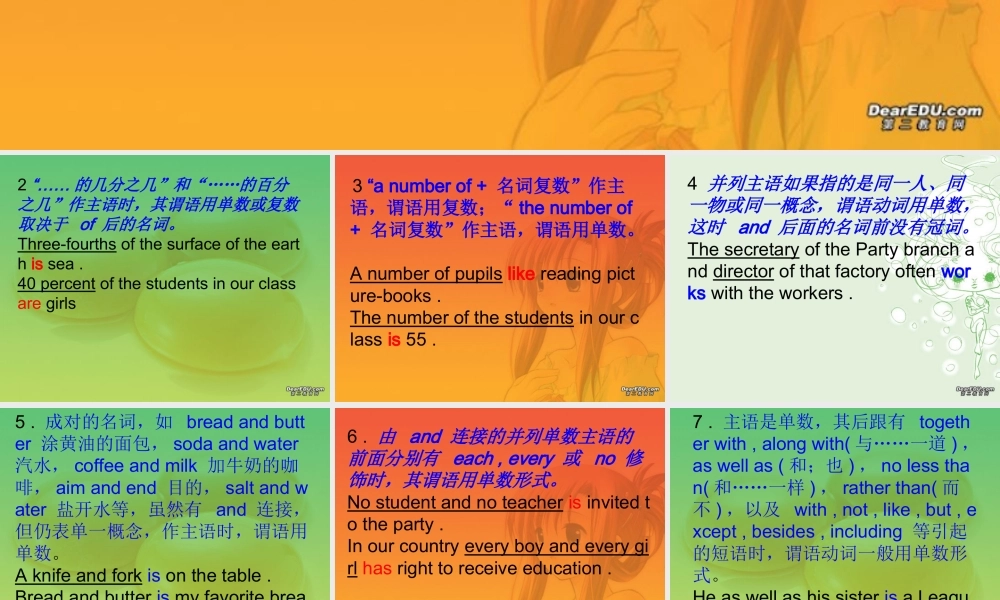1 由 many a 或 more than + 单数名词作主语时,其谓语用单数形式。Many a foreigner has been to the Great Wall . More than one student has visited the exhibition . 2 “…… 的几分之几”和“……的百分之几”作主语时,其谓语用单数或复数取决于 of 后的名词。Three-fourths of the surface of the earth is sea . 40 percent of the students in our class are girls 3 “a number of + 名词复数”作主语,谓语用复数;“ the number of + 名词复数”作主语,谓语用单数。A number of pupils like reading picture-books . The number of the students in our class is 55 . 4 并列主语如果指的是同一人、同一物或同一概念,谓语动词用单数,这时 and 后面的名词前没有冠词。The secretary of the Party branch and director of that factory often works with the workers . 5 . 成对的名词,如 bread and butter 涂黄油的面包, soda and water 汽水, coffee and milk 加牛奶的咖啡, aim and end 目的, salt and water 盐开水等,虽然有 and 连接,但仍表单一概念,作主语时,谓语用单数。A knife and fork is on the table . Bread and butter is my favorite breakfast.6 . 由 and 连接的并列单数主语的前面分别有 each , every 或 no 修饰时,其谓语用单数形式。No student and no teacher is invited to the party . In our country every boy and every girl has right to receive education . 7 . 主语是单数,其后跟有 together with , along with( 与……一道 ) ,as well as ( 和;也 ) , no less than( 和……一样 ) , rather than( 而不 ) ,以及 with , not , like , but , except , besides , including 等引起的短语时,谓语动词一般用单数形式。He as well as his sister is a League member . 8 . 在定语从句中主语是关系代词 who , that , which , 谓语动词的数应与先行词的数一致。I , who am your teacher , will teach you everything I know . 9 . 主语是一些只有复数形式的名词,如 clothes , trousers , glasses , compasses ,...




